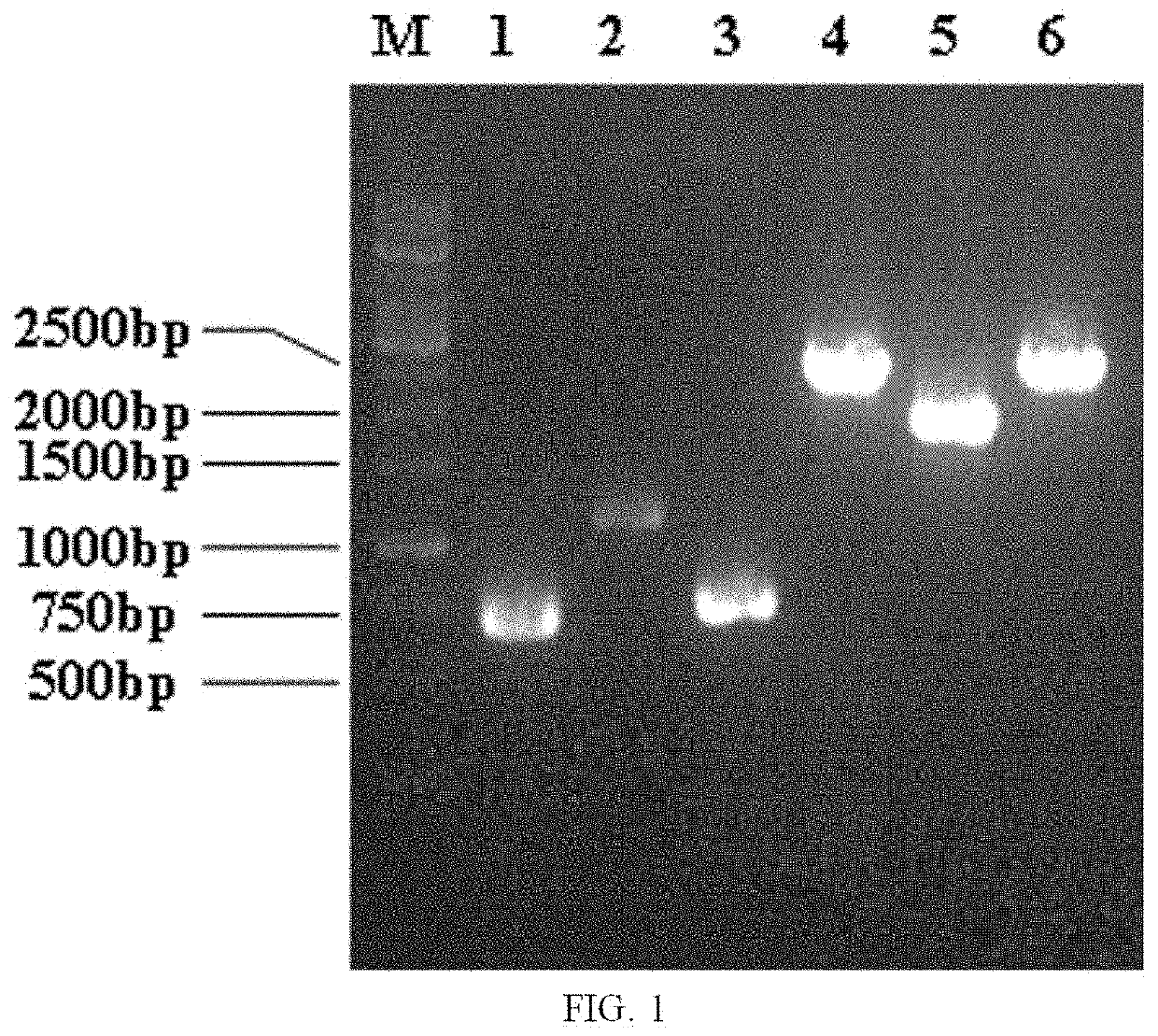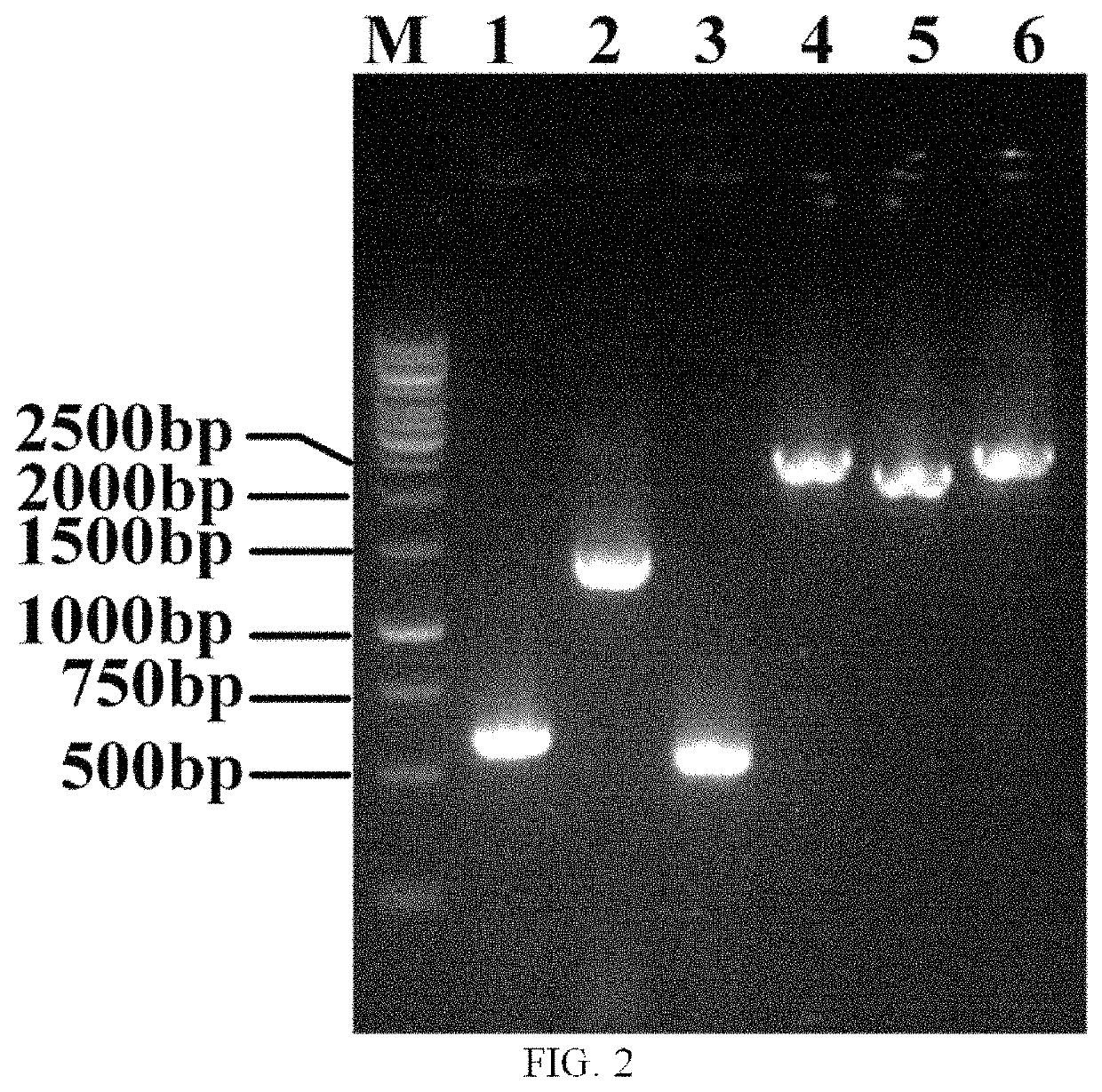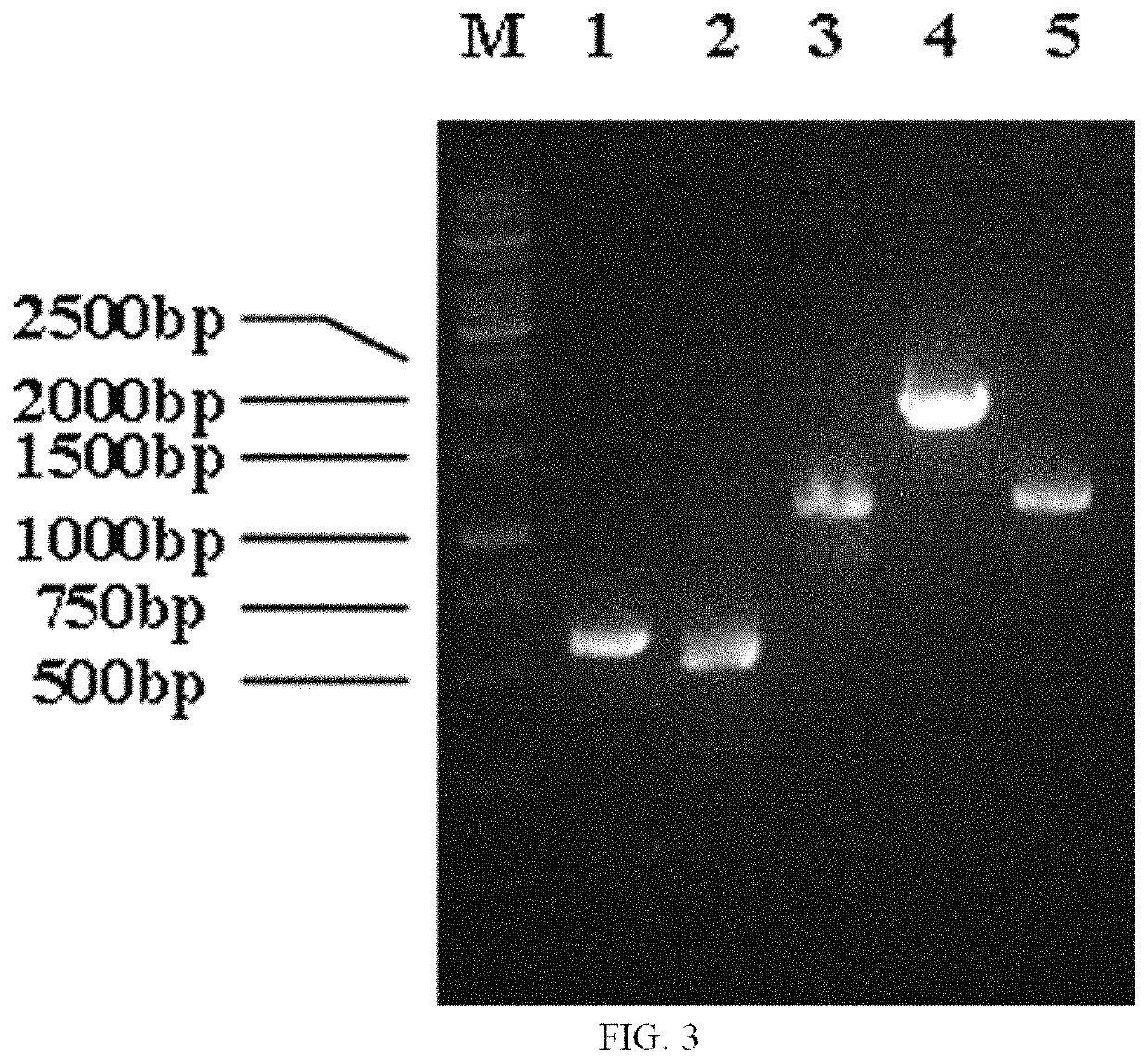Genetically engineered bacterium for sarcosine production as well as construction method and application
a technology of sarcosine and genetic engineering, applied in the field of genetic engineering, can solve the problems of difficult product separation and difficult reaction conditions
- Summary
- Abstract
- Description
- Claims
- Application Information
AI Technical Summary
Benefits of technology
Problems solved by technology
Method used
Image
Examples
example 1
ion of Genetically Engineered Strain Escherichia coli SAR
[0075]1. Gene Editing Method
[0076]The disclosure adopted a CRISPR / Cas9-mediated gene editing method, which refers to a literature (Metabolic Engineering, 2015, 31:13-21). Two plasmids used in this method were pGRB and pREDCas9 respectively. The pREDCas9 contained a gRNA plasmid elimination system, a Red recombination system of λ phage and a Cas9 protein expression system. It had spectinomycin resistance (working concentration: 100 mg / L) and was cultured at 32° C. The pGRB plasmid used pUC18 as a backbone, including promoter J23100, a gRNA-Cas9 binding region sequence and a terminator sequence. It had ampicillin resistance (working concentration: 100 mg / L) and was cultured at 37° C.
[0077]2. Specific Process for Strain Construction
[0078]2.1 Integration of PT7-dpkA (a Fragment Containing dpkA Gene and T7 Promoter) at the mbhA Site
[0079]An E. coli ATCC27325 genome was used as a template. Upstream homology arm primers UP-mbhA-S(SEQ...
example 2
n of Sarcosine by Flask Fermentation Using Strain E. coli SAR
[0108]Fermentation Experiment of Strain E. coli SAR in a 5 L Fermentor:
[0109]Slope activation culture: a ring of bacteria were scrapped off from a preserving tube in a −80° C. refrigerator, evenly coated on an activated slope, cultured for 12 h at 37° C., and then transferred to an eggplant-shaped bottle to conduct further culture for 12 h;
[0110]Seed culture: a proper amount of sterile water was placed in the eggplant-shaped bottle, and the bacterial suspension was inoculated into a seed culture medium to culture for 6 h, wherein the pH is stabilized at about 7.0, the temperature is constant at 37° C., and the dissolved oxygen is between 25% and 35%;
[0111]Fermentation culture: a fresh fermentation culture medium was inoculated with an inoculation amount of 15%. The loading amount was 60% (v culture medium / v fermentor). During the fermentation, the pH was stably controlled at about 7.0, and the temperature was maintained at...
PUM
| Property | Measurement | Unit |
|---|---|---|
| concentration | aaaaa | aaaaa |
| concentration | aaaaa | aaaaa |
| flow rate | aaaaa | aaaaa |
Abstract
Description
Claims
Application Information
 Login to View More
Login to View More - R&D
- Intellectual Property
- Life Sciences
- Materials
- Tech Scout
- Unparalleled Data Quality
- Higher Quality Content
- 60% Fewer Hallucinations
Browse by: Latest US Patents, China's latest patents, Technical Efficacy Thesaurus, Application Domain, Technology Topic, Popular Technical Reports.
© 2025 PatSnap. All rights reserved.Legal|Privacy policy|Modern Slavery Act Transparency Statement|Sitemap|About US| Contact US: help@patsnap.com



